General Information
- “Frozen shoulder,” also known as “adhesive capsulitis” is a slowly progressing, painful loss of shoulder motion due to inflammation and thickening of the capsule that surrounds the joint
- Occurs in 2% of the general population
- Most commonly occurs in women between the ages of 40 and 60
- Three major categories:
- Primary Idiopathic Frozen Shoulder– which means it just happens spontaneously without a specific reason
- Secondary Frozen Shoulder – which means that it occurs in response to another problem in the shoulder
- Post Traumatic – which means that it develops after an acute injury to the shoulder or sometimes following shoulder surgery
- Frozen shoulder is a very frustrating condition for both patient and surgeon because it often takes a long time to resolve
Anatomy and Function
- The shoulder is a ball-and-socket joint in which the ball-shaped head of the humerus (arm bone) interfaces with the glenoid (socket)
- Encasing this ball-and-socket joint is a capsule that helps to stabilize the ball’s position in the socket
- Within the joint capsule, a nutrient-rich fluid (synovial fluid) bathes the joint and capsule to lubricate the shoulder for increased range of motion
- The lining that secretes the synovial fluid can become inflamed, which causes the capsule to react and thicken
- This inflammatory reaction decreases the shoulder’s range of motion causing it to become “frozen” and painful
Time Course
- Frozen Shoulder occurs in three distinct phases
- Freezing: gradual increase of pain and decrease of shoulder motion that can last up to 9 months
- Frozen: pain is much decreased, but daily activities become very difficult range of motion is at its worst. This can last up to 6 months
- Thawing: shoulder motion improves slowly over a period that can last up to 24 months
- Early recognition of the problem by patient and doctor helps get treatment started ASAP and can reduce the time course of the condition
Risk Factors
- While the cause of Frozen Shoulder is not well understood, there exist associated factors
- Personal history of frozen shoulder. 40-50% of patients who develop frozen shoulder on one side, will get a frozen shoulder on the other side at some point
- Diabetes is a major risk factor. 10-20% of patients with diabetes will develop a frozen shoulder at some point during their lifetime
- Other general risk factors include thyroid disease, high cholesterol, COPD, osteopenia, Dupuytren’s disease, and coronary artery disease
- Shoulder immobilization because of another injury to the shoulder or same arm may increase the risk of a frozen shoulder
- Some injuries to the shoulder itself can start the process of inflammation leading to a frozen shoulder
Symptoms
- Pain and stiffness are the most common symptoms
- Pain can be extremely severe and debilitating, especially during the early stage
- Dull, aching sensation in the shoulder
- Night pain
- Decreased range of motion in all planes of motion
Diagnosis
- Physical Examination
- Areas that reproduce pain
- Careful assessment and documentation of range of motion
- X-rays and MRI
- Taylor may order radiographic tests to rule out other conditions such as arthritis, fracture, or rotator cuff tear
Treatment
- The goal in treatment is to eliminate pain, restore range of motion, and regain strength
- Nonsurgical – 90% of Frozen Shoulder patients can recover using the below conservative measures:
- Non-steroidal anti-inflammatory (NSAID) medication by mouth can control your pain
- Steroid injections directly into the shoulder under ultrasound guidance are a powerful anti-inflammatory that can help reduce the pain and allow better progress with physical therapy
- Physical Therapy is an important tool to help you improve range of motion with specific exercises and stretches
- Surgical – The decision to operate is patient specific and may be discussed with Dr. Taylor only if conservative measures have failed. Dr. Taylor will review with you the options, which may include:
- Shoulder arthroscopy with manipulation under anesthesia cuts bands of thickened capsule and then forcefully moves the shoulder in a controlled fashion while you are under anesthesia to free the shoulder from its tightened restrictions to allow for normal range of motion
- Postoperative physical therapy is critical to maintaining the range of motion that we regain from surgical treatment in the OR


